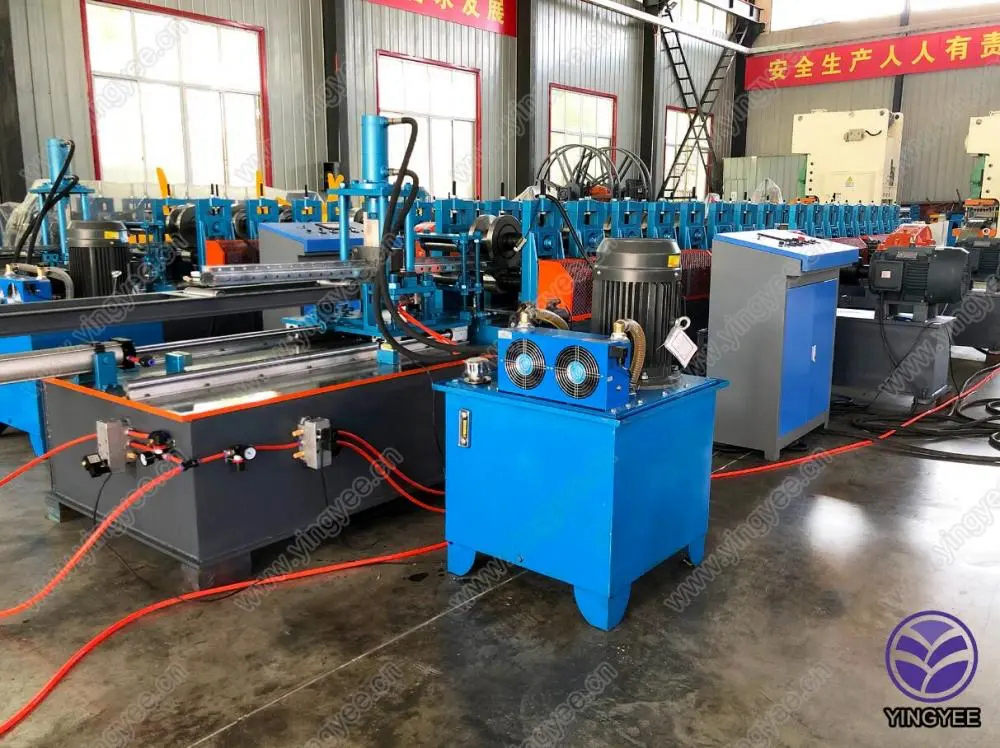
The Evolution of EPS Sandwich Panel Lines A Key to Modern Construction
In recent years, the construction industry has witnessed significant advancements in material technology, and one of the most notable innovations is the EPS (Expanded Polystyrene) sandwich panel. These lightweight, durable, and energy-efficient panels are revolutionizing the way structures are built, and the machinery behind their production, particularly the EPS sandwich panel line, plays a crucial role in this transformation.
The EPS sandwich panel consists of two outer layers made of materials like steel, concrete, or other composites, with a core of EPS foam that offers excellent thermal insulation. The use of EPS not only enhances thermal performance but also significantly reduces the overall weight of the panels, making them easier to handle and install. This attribute is paramount in the construction of energy-efficient buildings, which is increasingly becoming a priority in the face of climate change and the need for sustainable construction practices.
The production process of EPS sandwich panels is highly dependent on the efficiency and sophistication of the EPS sandwich panel line. This machinery is designed to automate various stages of production, from the preparation of raw materials to the cutting and finishing of the final product. The technology involved in these production lines has seen remarkable improvements in automation, precision, and speed, which greatly enhances the overall output and quality of the panels.
Key Components of an EPS Sandwich Panel Line
A typical EPS sandwich panel line comprises several key components that work together seamlessly to produce high-quality panels
1. EPS Foam Extruder This is where EPS raw material is heated and expanded into foam. The extruder's design and functionality are crucial since they determine the density and quality of the foam, which directly influences the thermal and structural properties of the final panel.
2. Laminating Station After the foam is prepared, it is passed through a laminating station where the outer layers are bonded to the EPS core. This process requires precise control over temperature and pressure to ensure a strong and durable bond.

3. Cutting Machines Once the panels are laminated, they need to be cut to the desired dimensions. Advanced cutting machines equipped with computer numerical control (CNC) technology allow for high precision in cutting, ensuring minimal waste and accuracy in panel sizes.
4. Quality Control Throughout the production process, various quality control measures are implemented. These checks ensure that the panels meet industry standards and specifications. Parameters such as dimensional accuracy, bond strength, and insulation performance are rigorously tested.
5. Storage and Packaging Systems After production, the panels need to be stored and packaged appropriately to prevent damage during transportation. Automated storage solutions and packaging machines help streamline this process.
Benefits and Applications
The advantages of using EPS sandwich panels are manifold. They provide exceptional insulation properties, leading to reduced energy consumption in buildings. Furthermore, their lightweight nature allows for faster and more economical construction processes, reducing labor costs and project timelines.
Given their versatility, EPS sandwich panels find applications in various sectors, including residential buildings, commercial structures, cold storage facilities, and industrial buildings. Their ability to comply with stringent building codes and energy efficiency standards makes them a favored choice among architects and builders.
Conclusion
The EPS sandwich panel line stands as a testament to the innovative spirit of the construction industry. As demand for sustainable and efficient building solutions continues to grow, the technology and machinery associated with EPS panels will undoubtedly evolve further. This evolution will not only enhance the production processes but also play a pivotal role in addressing contemporary challenges in construction, from sustainability to economic efficiency. Embracing these advancements allows the industry to build more intelligently and responsibly, paving the way for a brighter, more energy-efficient future.